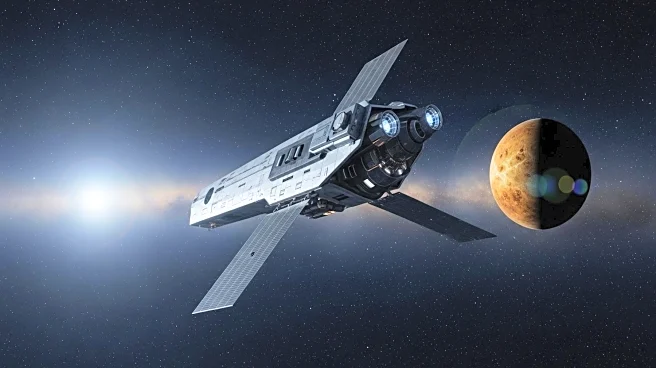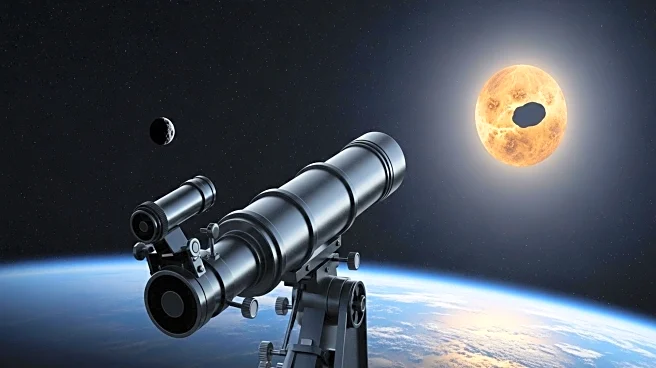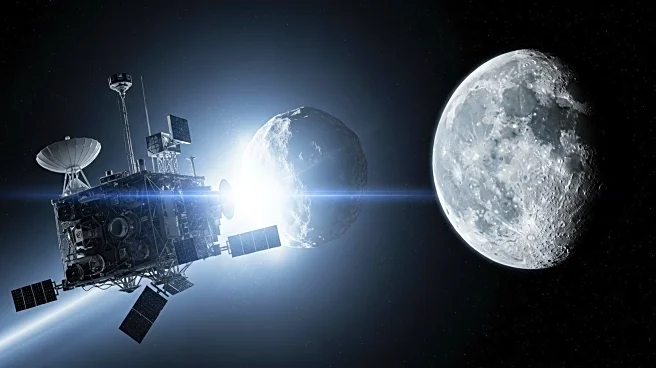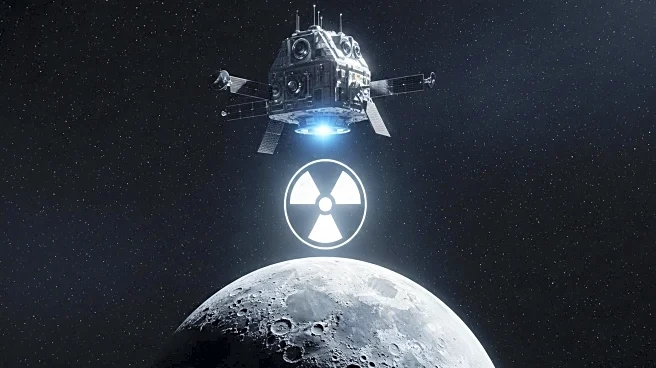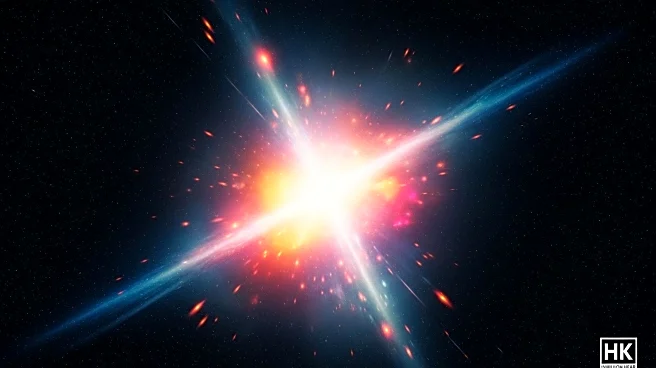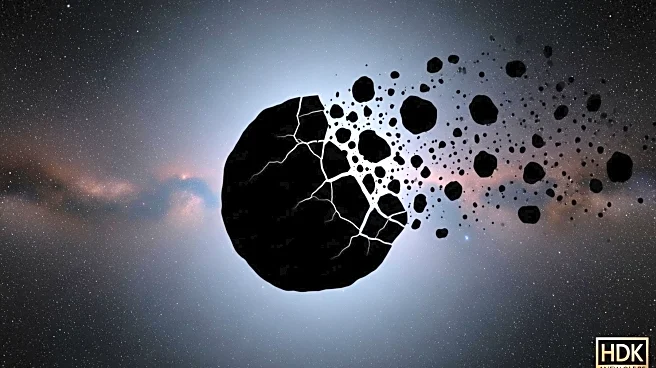What's Happening?
A recent study published in the Astronomy & Astrophysics journal highlights the potential threat posed by asteroids co-orbiting with Venus. These asteroids, which follow a similar orbital path around the Sun, are difficult to detect due to the Sun's glare. Researchers have identified 20 known asteroids in this group, but suspect many more exist. These asteroids could come within dangerously close proximity to Earth, less than 0.0005 astronomical units (75,000 km, 46,000 miles) from our planet's orbit, posing a potential collision threat. The study emphasizes the need for improved detection methods, as current telescopes may not be able to identify these asteroids until two weeks before a potential impact.
Why It's Important?
The findings of this study are crucial for planetary defense strategies, as they reveal a population of potentially hazardous asteroids that are currently undetectable with existing technology. The potential impact of these asteroids could result in significant devastation, forming craters and releasing energy equivalent to hundreds of megatons. This underscores the importance of advancing observational capabilities and developing new technologies to monitor and mitigate asteroid threats. The study also highlights the need for global cooperation in space surveillance to ensure the safety of Earth from celestial threats.
Beyond the Headlines
The study raises ethical and strategic considerations for planetary defense, as it challenges current assumptions about asteroid detection and monitoring. It suggests that planetary defense efforts must account for unseen threats and invest in technologies that can detect asteroids under challenging conditions. The research also prompts discussions on international collaboration in space exploration and the sharing of data and resources to enhance global security against space hazards.


